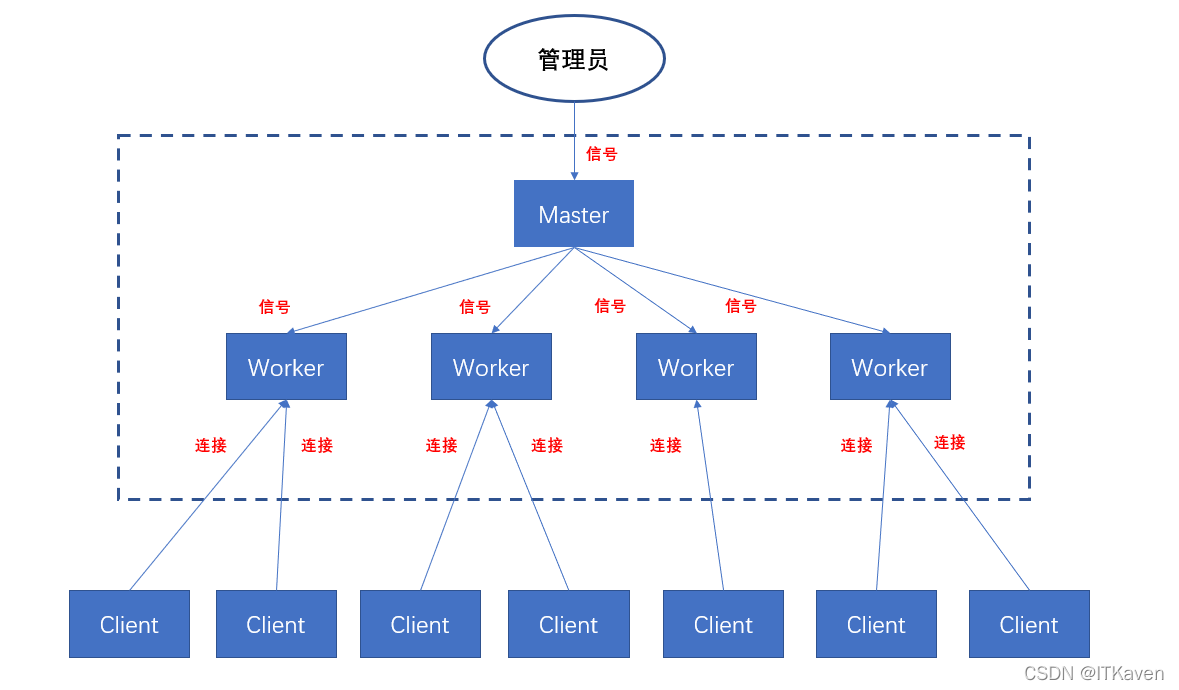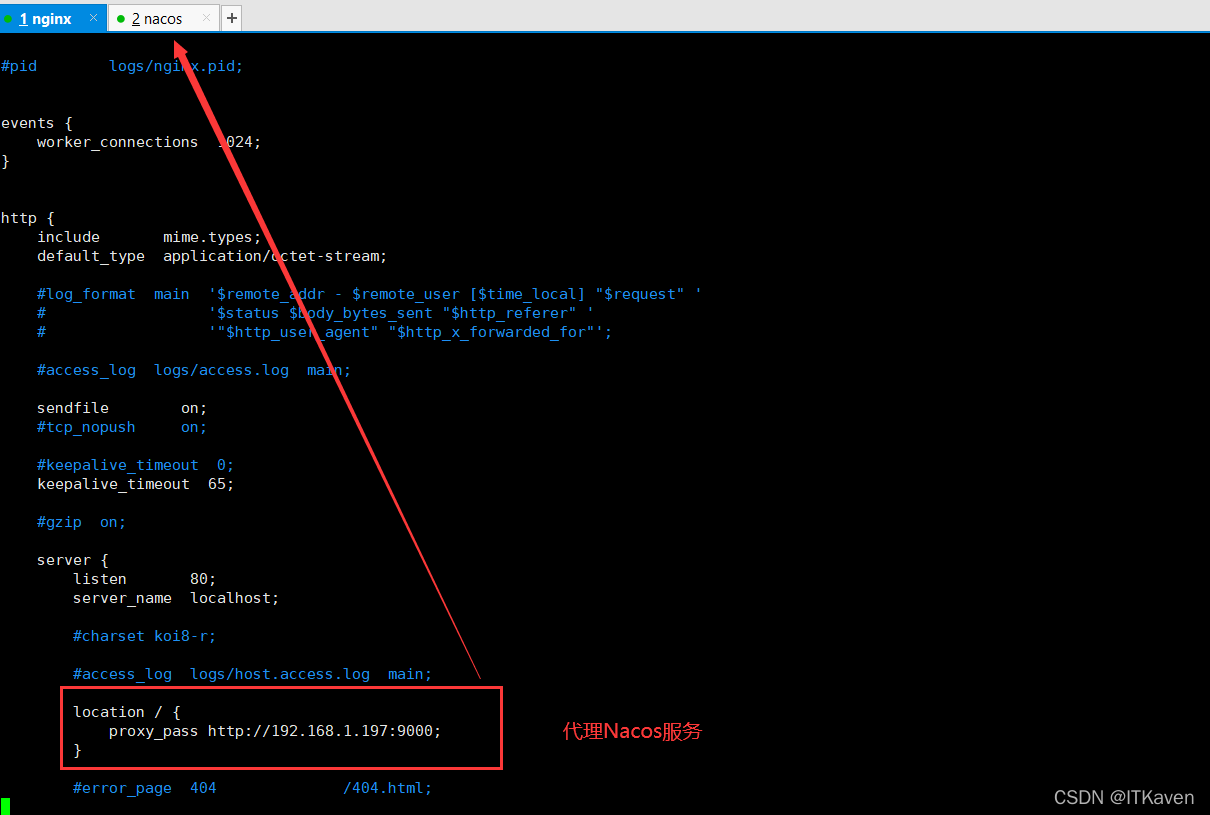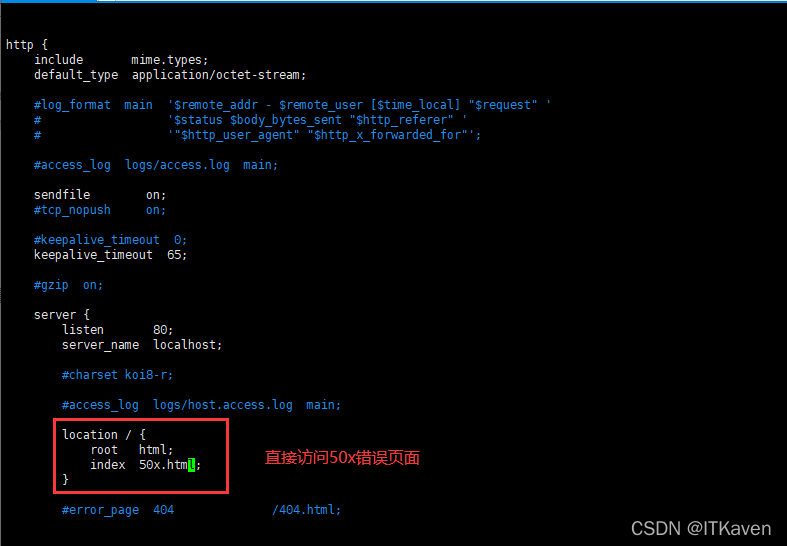브라우저를 통해 로컬에서 Nginx 서비스에 액세스할 수 있도록 방화벽을 닫으세요. Nginx服务。
[root@localhost ~]# systemctl stop firewalld

查看信号量:
[root@localhost ~]# kill -l 1) SIGHUP 2) SIGINT 3) SIGQUIT 4) SIGILL 5) SIGTRAP 6) SIGABRT 7) SIGBUS 8) SIGFPE 9) SIGKILL 10) SIGUSR1 11) SIGSEGV 12) SIGUSR2 13) SIGPIPE 14) SIGALRM 15) SIGTERM 16) SIGSTKFLT 17) SIGCHLD 18) SIGCONT 19) SIGSTOP 20) SIGTSTP 21) SIGTTIN 22) SIGTTOU 23) SIGURG 24) SIGXCPU 25) SIGXFSZ 26) SIGVTALRM 27) SIGPROF 28) SIGWINCH 29) SIGIO 30) SIGPWR 31) SIGSYS 34) SIGRTMIN 35) SIGRTMIN+1 36) SIGRTMIN+2 37) SIGRTMIN+3 38) SIGRTMIN+4 39) SIGRTMIN+5 40) SIGRTMIN+6 41) SIGRTMIN+7 42) SIGRTMIN+8 43) SIGRTMIN+9 44) SIGRTMIN+10 45) SIGRTMIN+11 46) SIGRTMIN+12 47) SIGRTMIN+13 48) SIGRTMIN+14 49) SIGRTMIN+15 50) SIGRTMAX-14 51) SIGRTMAX-13 52) SIGRTMAX-12 53) SIGRTMAX-11 54) SIGRTMAX-10 55) SIGRTMAX-9 56) SIGRTMAX-8 57) SIGRTMAX-7 58) SIGRTMAX-6 59) SIGRTMAX-5 60) SIGRTMAX-4 61) SIGRTMAX-3 62) SIGRTMAX-2 63) SIGRTMAX-1 64) SIGRTMAX
有64种信号量,以下是几种常用的信号量:
SIGINT 、SIGTERM:快速关闭。
SIGQUIT:从容关闭(优雅的关闭进程,即等请求结束后再关闭)。
SIGHUP:平滑重启,重新加载配置文件 (平滑重启,修改配置文件之后不用重启服务器)。
SIGUSR1 :重新读取日志文件,在切割日志文件时用途较大。
SIGUSR2:平滑升级可执行程序 ,nginx升级时候用。
SIGWINCH :从容关闭工作进程。
Nginx是一个多进程的高性能反向代理服务器,包含一个master进程和多个worker进程(worker进程的数量可以通过nginx.conf配置文件中的worker_processes参数进行设置,默认1个),这样可以充分利用多核处理器。

默认1个worker进程。

并且master进程和worker进程是父子进程关系。

Nginx工作模式为多进程,Nginx在启动之后会有一个master进程和多个worker进程(默认1个),多个worker子进程将监听master父进程监听的端口(参考父子进程的关系),并行处理请求。master父进程主要用来管理worker子进程(管理真正提供服务的worker进程,向worker进程发送信号,监控worker进程的运行状态,当worker进程异常退出后,会重新启动新的worker进程),读取并验证配置信息,master进程不会对用户请求提供服务,而用户请求是由worker进程进行处理。
Nginx是通过信号量来控制,比如停止和重启Nginx。信号量是进程间通信的一种机制,master主进程控制多个worker子进程,也是通过信号量。

现在来演示Nginx是怎么实现热部署的,博主通过修改Nginx的配置文件来模拟Nginx的升级(先copy一份副本)。
[root@localhost ~]# cd /usr/local/nginx/conf/ [root@localhost conf]# ll 总用量 68 -rw-r--r--. 1 root root 1077 12月 20 20:24 fastcgi.conf -rw-r--r--. 1 root root 1077 12月 20 20:24 fastcgi.conf.default -rw-r--r--. 1 root root 1007 12月 20 20:24 fastcgi_params -rw-r--r--. 1 root root 1007 12月 20 20:24 fastcgi_params.default -rw-r--r--. 1 root root 2837 12月 20 20:24 koi-utf -rw-r--r--. 1 root root 2223 12月 20 20:24 koi-win -rw-r--r--. 1 root root 5231 12月 20 20:24 mime.types -rw-r--r--. 1 root root 5231 12月 20 20:24 mime.types.default -rw-r--r--. 1 root root 2656 12月 20 21:26 nginx.conf -rw-r--r--. 1 root root 2656 12月 20 20:24 nginx.conf.default -rw-r--r--. 1 root root 636 12月 20 20:24 scgi_params -rw-r--r--. 1 root root 636 12月 20 20:24 scgi_params.default -rw-r--r--. 1 root root 664 12月 20 20:24 uwsgi_params -rw-r--r--. 1 root root 664 12月 20 20:24 uwsgi_params.default -rw-r--r--. 1 root root 3610 12月 20 20:24 win-utf [root@localhost conf]# cp nginx.conf nginx_old.conf [root@localhost conf]# vim nginx.conf

由于还没有给Nginx进行热部署,现在访问http://192.168.1.199/还是原来的Nginx页面。

查看Nginx的进程:
[root@localhost conf]# ps -ef | grep nginx root 14964 1 0 22:25 ? 00:00:00 nginx: master process ./nginx nobody 14965 14964 0 22:25 ? 00:00:00 nginx: worker process root 15016 1521 0 23:07 pts/0 00:00:00 grep --color=auto nginx
给master进程发送SIGUSR2信号,让Nginx平滑升级可执行程序。可以看到Nginx重新启动了一组master进程和worker进程,而新master进程是旧master进程的子进程(通过父子进程的继承关系,新master进程可以很方便地继承旧master进程的相关资源)。
[root@localhost conf]# kill -s SIGUSR2 14964 [root@localhost conf]# ps -ef | grep nginx root 14964 1 0 22:25 ? 00:00:00 nginx: master process ./nginx nobody 14965 14964 0 22:25 ? 00:00:00 nginx: worker process root 15019 14964 0 23:18 ? 00:00:00 nginx: master process ./nginx nobody 15020 15019 0 23:18 ? 00:00:00 nginx: worker process root 15022 1521 0 23:19 pts/0 00:00:00 grep --color=auto nginx
并且Nginx在日志目录中存储了新旧pid文件(保存了新旧master进程的ID)。
[root@localhost conf]# ll ../logs 总用量 16 -rw-r--r--. 1 root root 2729 12月 20 23:20 access.log -rw-r--r--. 1 root root 708 12月 20 23:18 error.log -rw-r--r--. 1 root root 6 12月 20 23:18 nginx.pid -rw-r--r--. 1 root root 6 12月 20 22:25 nginx.pid.oldbin [root@localhost conf]# cat ../logs/nginx.pid 15019 [root@localhost conf]# cat ../logs/nginx.pid.oldbin 14964
给旧master进程发送SIGWINCH信号,让旧master进程关闭旧worker进程。
[root@localhost conf]# kill -s SIGWINCH 14964 [root@localhost conf]# ps -ef | grep nginx root 14964 1 0 22:25 ? 00:00:00 nginx: master process ./nginx root 15019 14964 0 23:18 ? 00:00:00 nginx: master process ./nginx nobody 15020 15019 0 23:18 ? 00:00:00 nginx: worker process root 15030 1521 0 23:27 pts/0 00:00:00 grep --color=auto nginx
现在访问http://192.168.1.199/,会响应404。

而访问http://192.168.1.199/nacos,会访问到Nacos
[root@localhost conf]# kill -s SIGQUIT 14964 [root@localhost conf]# ps -ef | grep nginx root 15019 1 0 23:18 ? 00:00:00 nginx: master process ./nginx nobody 15020 15019 0 23:18 ? 00:00:00 nginx: worker process root 15034 1521 0 23:31 pts/0 00:00:00 grep --color=auto nginx

세마포 보기: 
[root@localhost conf]# kill -s SIGHUP 15084 [root@localhost conf]# ps -ef | grep nginx root 15084 1 0 12月20 ? 00:00:00 nginx: master process ./nginx root 15106 15084 0 12月20 ? 00:00:00 nginx: master process ./nginx nobody 15107 15106 0 12月20 ? 00:00:00 nginx: worker process nobody 15131 15084 0 00:02 ? 00:00:00 nginx: worker process root 15141 1521 0 00:09 pts/0 00:00:00 grep --color=auto nginx
64 종류의 세마포가 있습니다. 다음은 일반적으로 사용되는 세마포입니다: SIGTERM: 빠른 종료. 🎜SIGQUIT: 정상적으로 종료합니다(프로세스를 정상적으로 종료합니다. 즉, 요청이 완료될 때까지 기다렸다가 종료합니다). 🎜SIGHUP: 원활한 재시작, 구성 파일 다시 로드(부드러운 재시작, 구성 파일 수정 후 서버를 다시 시작할 필요 없음). 🎜SIGUSR1: 로그 파일을 다시 읽으면 로그 파일을 잘라낼 때 더 유용합니다. 🎜SIGUSR2: nginx를 업그레이드할 때 사용되는 실행 프로그램을 원활하게 업그레이드합니다. 🎜SIGWINCH: 작업자 프로세스를 정상적으로 종료합니다. 🎜Nginx는 마스터</code를 포함하는 다중 프로세스, 고성능 역방향 프록시 서버입니다. > 프로세스 및 여러 <code>worker 프로세스(worker 프로세스 수는 nginx.conf</의 <code>worker_processes 매개변수를 통해 전달될 수 있음) code> 구성 파일 설정(기본값 1)을 사용하면 멀티 코어 프로세서를 최대한 활용할 수 있습니다. 🎜🎜 🎜🎜🎜Default
🎜🎜🎜Default 1 작업자 프로세스. 🎜🎜🎜 🎜🎜🎜and
🎜🎜🎜and 마스터 프로세스와 worker 프로세스는 상위-하위 프로세스 관계를 갖습니다. 🎜🎜🎜 🎜🎜
🎜🎜Nginx 작업 모드는 다중 프로세스입니다. Nginx가 시작된 후에는 하나의 마스터 프로세스와 여러 작업자 프로세스가 있습니다(기본값). 1 ), 여러 worker 하위 프로세스는 마스터 상위 프로세스가 모니터링하는 포트를 수신합니다(상위 프로세스와 하위 프로세스 간의 관계 참조). 요청을 병렬로 처리합니다. 마스터 상위 프로세스는 주로 worker 하위 프로세스를 관리하는 데 사용됩니다(실제로 서비스를 worker에게 제공하는 <code>worker 프로세스 관리). 프로세스 신호를 보내고 worker 프로세스의 실행 상태를 모니터링합니다. worker 프로세스가 비정상적으로 종료되면 새로운 worker 프로세스가 시작됩니다. 다시 시작됩니다), 구성 정보를 읽고 확인하세요. master 프로세스는 사용자 요청에 대한 서비스를 제공하지 않지만 사용자 요청은 worker 프로세스에 의해 처리됩니다. 🎜🎜Nginx는 Nginx 중지 및 다시 시작과 같은 세마포어를 통해 제어됩니다. 세마포어는 프로세스 간 통신을 위한 메커니즘입니다. 마스터 기본 프로세스는 세마포어를 통해 여러 작업자 하위 프로세스를 제어합니다. 🎜🎜🎜 🎜🎜🎜지금 시연해 보겠습니다. < code>Nginx는 핫 배포를 어떻게 구현합니까? 블로거는
🎜🎜🎜지금 시연해 보겠습니다. < code>Nginx는 핫 배포를 어떻게 구현합니까? 블로거는 Nginx의 구성 파일을 수정하여 Nginx의 업그레이드를 시뮬레이션합니다(첫 번째 복사). 코드> > 사본). 🎜[root@localhost conf]# kill -s SIGQUIT 15106 [root@localhost conf]# ps -ef | grep nginx root 15084 1 0 12月20 ? 00:00:00 nginx: master process ./nginx nobody 15131 15084 0 00:02 ? 00:00:00 nginx: worker process root 15159 1521 0 00:25 pts/0 00:00:00 grep --color=auto nginx
 🎜🎜아닙니다. 아직
🎜🎜아닙니다. 아직Nginx가 핫 배포를 수행합니다. 이제 http://192.168.1.199/ 또는 원래 Nginx 페이지를 방문하세요. 🎜🎜🎜 🎜🎜🎜보기
🎜🎜🎜보기 Nginx 프로세스: 🎜[root@localhost conf]# cp -f nginx_old.conf nginx.conf cp:是否覆盖"nginx.conf"? y
SIGUSR2 신호를 마스터 프로세스에 보내 Nginx가 실행 프로그램을 원활하게 업그레이드할 수 있도록 합니다. Nginx가 일련의 master 프로세스와 worker 프로세스를 다시 시작했고 새로운 master 프로세스가 다시 시작되었음을 알 수 있습니다. 이전 master 프로세스 code>master 프로세스의 하위 프로세스(상위 프로세스와 하위 프로세스 간의 상속 관계를 통해 새 master 프로세스는 쉽게 이전 마스터 프로세스의 관련 리소스를 상속합니다.) 🎜[root@localhost conf]# kill -s SIGHUP 15084
Nginx는 이전 및 새 pid 파일을 로그 디렉터리에 저장합니다(새 및 이전 마스터의 <code>ID 저장) 프로세스). 🎜rrreee🎜 SIGWINCH 신호를 이전 master 프로세스에 보내고 이전 master 프로세스가 이전 worker를 닫도록 합니다. 프로세스. 🎜rrreee🎜이제 http://192.168.1.199/를 방문하면 404로 응답합니다. 🎜🎜🎜 🎜🎜🎜 방문 중 < code >http://192.168.1.199/nacos는
🎜🎜🎜 방문 중 < code >http://192.168.1.199/nacos는 Nacos 서비스에 액세스합니다. 🎜🎜🎜🎜🎜🎜如果升级版本没有问题,就可以给旧master进程发送SIGQUIT信号,让旧master进程关闭,这样就只剩下新master进程和新worker进程,实现了Nginx的热部署。
[root@localhost conf]# kill -s SIGQUIT 14964 [root@localhost conf]# ps -ef | grep nginx root 15019 1 0 23:18 ? 00:00:00 nginx: master process ./nginx nobody 15020 15019 0 23:18 ? 00:00:00 nginx: worker process root 15034 1521 0 23:31 pts/0 00:00:00 grep --color=auto nginx
如果升级版本有问题,需要回滚到之前的版本,就可以给旧master进程发送SIGHUP信号,因为博主重新进行了测试,所以进程号都变了,但很显然旧master进程重新创建了旧worker进程,并且进行版本升级的master和worker进程没有被关闭。
[root@localhost conf]# kill -s SIGHUP 15084 [root@localhost conf]# ps -ef | grep nginx root 15084 1 0 12月20 ? 00:00:00 nginx: master process ./nginx root 15106 15084 0 12月20 ? 00:00:00 nginx: master process ./nginx nobody 15107 15106 0 12月20 ? 00:00:00 nginx: worker process nobody 15131 15084 0 00:02 ? 00:00:00 nginx: worker process root 15141 1521 0 00:09 pts/0 00:00:00 grep --color=auto nginx
给新master进程发送SIGQUIT信号,让新master进程关闭,这样就只剩下旧master进程和新创建的旧worker进程,实现了回滚。
[root@localhost conf]# kill -s SIGQUIT 15106 [root@localhost conf]# ps -ef | grep nginx root 15084 1 0 12月20 ? 00:00:00 nginx: master process ./nginx nobody 15131 15084 0 00:02 ? 00:00:00 nginx: worker process root 15159 1521 0 00:25 pts/0 00:00:00 grep --color=auto nginx
回滚成功。

还需要对版本回滚(即博主这里的配置文件回滚,不然下次重启就会出问题)。
[root@localhost conf]# cp -f nginx_old.conf nginx.conf cp:是否覆盖"nginx.conf"? y
为什么给旧master进程发送SIGHUP信号,旧master进程重新创建的worker进程没有重新读取配置文件?下面是官方的说明:
Send the HUP signal to the old master process. The old master process will start new worker processes without re-reading the configuration. After that, all new processes can be shut down gracefully, by sending the QUIT signal to the new master process.
向旧
master进程发送SIGHUP信号。旧master进程将启动新worker进程,而无需重新读取配置。之后,通过向新master进程发送SIGQUIT信号,所有新进程都可以正常关闭。
如果不存在新进程的情况下(只有一组master、worker进程),修改配置文件,再向master进程发送SIGHUP信号,看是否会重新加载配置文件。

[root@localhost conf]# kill -s SIGHUP 15084
很显然配置文件被重新加载了,由于博主还没有看源码,只能猜测Nginx的实现(如果说错了,请大家评论补充),Nginx应该是根据当前是否在进行热部署(存在新master进程),来决定SIGHUP信号是否需要重新加载配置文件。

위 내용은 Nginx 핫 배포를 구현하는 방법의 상세 내용입니다. 자세한 내용은 PHP 중국어 웹사이트의 기타 관련 기사를 참조하세요!